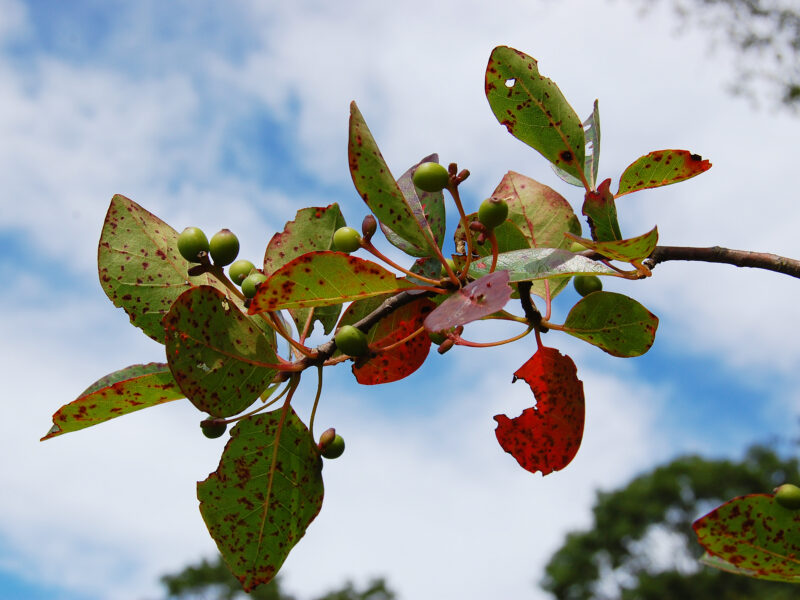
Elvis Presley hails from Tupelo, Mississippi. So does the tupelo tree.
Elvis must have noticed a tupelo or two growing up, but he never wrote a song about them.
You only find tupelos, or pepperidge, as they are known in the North, growing in damp soil. Our tupelos are the last to sprout leaves and the first to drop them near the end of summer.
In the last days of August and beginning of September, the tupelo leaves are bright red-orange while all the other trees still have green leaves. In less than a week, almost all of those beautiful leaves drop off — the branches are bare.
In Southampton, one of the best places to view tupelos is on Whites Lane and Barkers Island Road in the hamlet of Tuckahoe. In Amagansett, tupelos are the dominant trees where Cranberry Hole Road meets Bendigo Road.
Perhaps the most beautiful of all fall trees is the red maple. During July the leaves are bright green, but by the end of August other colors begin to creep in. Come October, the three primary colors are resplendent and two secondary colors chime in.
The red maple, including some very large ones, is found throughout the wetter of our forest soils, even in the middle of shallow ponds.
Beeches and hickories sport yellowish leaves come October, and where they occur together, as on the shoulders of Millstone Brook Road in North Sea, it is hard to tell the two apart. Hickories are here and there throughout the South Fork, but beeches occur in groups together in special places, as in Hither Woods, the woods fronting the north end of Kellis Pond in Bridgehampton, and a few other spots on the South Fork. Beeches multiply by sending out roots that sprout more beeches, and if all goes well, they form single-species stands.
Some understory species — in particular, blueberries and huckleberries — sport vivid leaf colors in September and the beginning of October. Their colors are short-lived, however, as they quickly turn into browns and grays prior to the leaves falling off by the end of October.
Maybe the most colorful of the shrubs, with red leaves in the late summer and fall, is burning bush, Euonymus alatus. It is a Southern and Midwestern species that can be found in western New York State, but it is missing as a native on Long Island. It is widely planted here, and given the rapidly warming climate that has extended the northward range of so many species, such as the southern red oak, don’t rip it up if you find it growing in your garden — it will soon reach Long Island in its wild form on its own.
The oaks — scarlet, black, white, pin, red, and a few others — are the last to turn. In different years, the colors of their leaves can be quite spectacular, if painfully so, because they are short-lived and soon fall to earth. By the time the oaks get around to sporting fall coloration, all the other trees have dropped almost all of their leaves. When the oaks add their leaves to the growing pile, one knows that winter, and, perhaps, snow is close at hand.
There is a bit of land along the west side of Long Pond called Pepperidge Point, which is almost an island. It is the very same site where the local artist Lafayette Laguire painted a row of pepperidge trees in the very early 1900s.
Victoria Bustamante does not paint trees; she identifies and photographs them. She is the only person I can think of who knows our local trees so intimately that she can drive along at a speedy clip and identify them through the windshield without missing a one.
That is an art that I, who also loves trees, could never master.